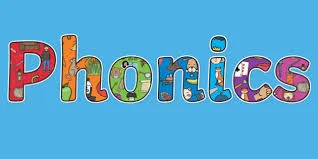My preparation so far...
Laying the Foundations: Preparing to Start Home Education
Perhaps it's the teacher in me—or simply a deep sense of responsibility—but I've made a conscious decision to prepare thoroughly before beginning our home education journey in September. I don't want to look back and feel that I let time slip away without making the most of these early, formative years. That's why I've already begun laying the groundwork.
There are two academic areas I consider particularly important in the early years: phonics, as the foundation for reading and writing, and early mathematics. These will form the core of our daily routine. My plan, for the year my son turns four, is to include short, focused sessions on both subjects each day. These sessions will combine shared learning and playful activities to support his development in a gentle, engaging way.
Phonics: Building Blocks for Reading and Writing
Phonics is a method for teaching children how to read and write by helping them to hear, identify, and manipulate the individual sounds—or phonemes—that make up spoken words (National Literacy Trust). It's a vital skill that underpins early literacy, and one we’ve already begun exploring in a slow and organic way.
My son already loves books and stories. He frequently sits with a book, turning pages, looking at the illustrations, and retelling the narratives from memory. This natural enthusiasm is a valuable asset and will undoubtedly support his progress in phonics.
We are using the synthetic phonics approach, which is the primary method taught in schools. It involves teaching children to recognise individual sounds and then blend them together to form words. For example, the word cat is broken down into the sounds /c/, /a/, /t/ and then blended to read the word as a whole.
However, research from University College London has shown that while synthetic phonics is helpful, it is more effective when integrated with whole texts. Lessons that connect phonics learning to meaningful stories support deeper comprehension and engagement. This is echoed by findings from Manchester Metropolitan University, which highlight the importance of developing comprehension skills alongside phonics—particularly through the use of pictures and context.
Home education offers the freedom for children to access books throughout the day, to read at their own pace, and to enjoy stories purely for pleasure. Wordless picture books, often given to children at the start of school, are a reminder that "reading" can begin with interpreting images. My son's habit of storytelling from pictures is not just charming—it's an important step in becoming literate.
Reading opens up a world of opportunity. Listening to stories builds vocabulary, sparks imagination, and enhances understanding. As children begin to read independently, their capacity for learning, problem-solving, and self-expression grows exponentially. I recently watched a documentary where a family allowed their child to decide when to learn to read; at eight years old, the child still hadn't started, and instead spent a lot of time on screens. It left me wondering: what learning might they be missing? What richer experiences could reading be offering them?
In preparation for September, I've created a long-term phonics plan, covering Phases 2 to 4. I've drawn from several programmes, including Jolly Phonics and Little Wandle Letters and Sounds, as well as using Twinkl to supplement with games and resources. While the plan isn't rigid, it gives me a framework to follow—and the flexibility to adapt as needed.
There are many excellent phonics resources and videos available online to support home educators. Having a clear direction helps me feel confident and ensures our time is used well.
Maths: Everyday Opportunities to Explore
Mathematics in the early years lays essential foundations. It helps develop a range of transferable skills, including spatial awareness, reasoning, problem-solving, and the ability to explain and justify decisions (Billesley Research School).
One of the joys of early maths is how naturally it fits into everyday life. At home, mathematical thinking can be encouraged through simple activities: measuring ingredients while cooking, comparing sizes during play, counting objects, or recognising patterns. Vocabulary such as “bigger,”“smaller,”“longer,” or “more” can be woven into natural conversations.
We also use an interactive calendar each morning, discussing the date, day of the week, season, and weather. This daily routine helps build a sense of time and sequence—concepts that are fundamental to mathematical thinking.
I've created an informal weekly plan for maths, following the White Rose Maths progression, and again using Twinkl for planning support and resources. Each session will be short and playful, using games and hands-on activities rather than formal written work. My priority is to keep learning enjoyable, manageable, and meaningful.
A Thoughtful Start
Spending time preparing gives me a sense of clarity and purpose. It helps me feel confident that our time together will be well spent and focused. My overarching aim is for my children to make progress in a relaxed, enjoyable environment—one that nurtures curiosity and cultivates a lifelong love of learning.




Comments
Post a Comment